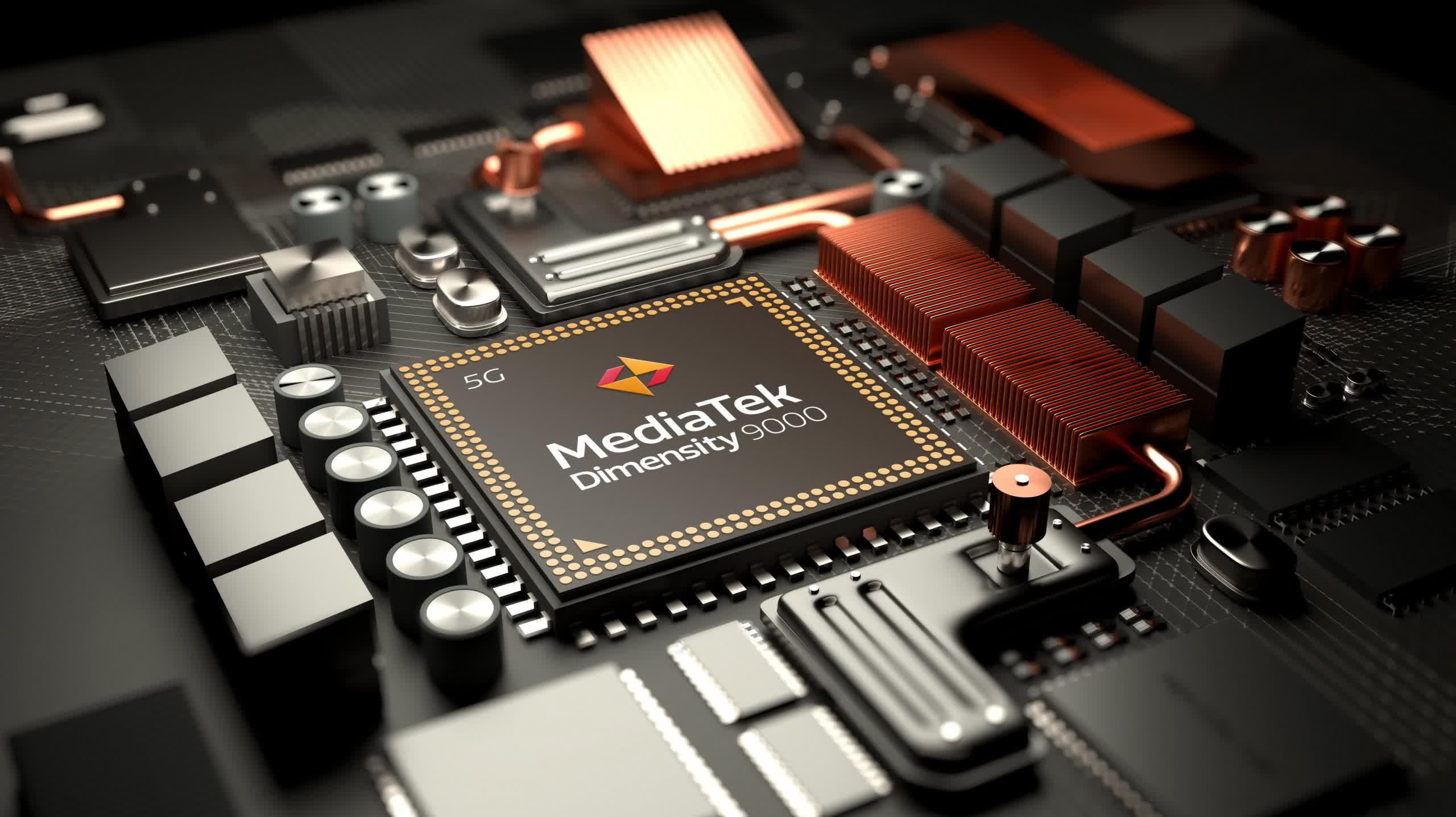In brief: MediaTek wants back in the high-end mobile SoC game, and its latest Dimensity chipset packs a lot of improvements designed to make it more competitive against Qualcomm and Samsung's best offerings. The first devices sporting the new chip will arrive in the first half of 2022, so it won't be long before we'll see if they are flagship material.
Over the past two years, MediaTek has been trying to break into the high end smartphone space with mobile chipsets that it said would rival Qualcomm's Snapdragon 8xx series and Samsung's flagship Exynos offerings. The Dimensity 1000, 1100, and 1200 chipsets delivered plenty of performance and nice-to-have features like 5G connectivity, AV1 hardware decode, and support for high refresh rate displays. However, manufacturers have only adopted them for their mid-range phones like the OnePlus Nord 2 5G and the OnePlus 11T.
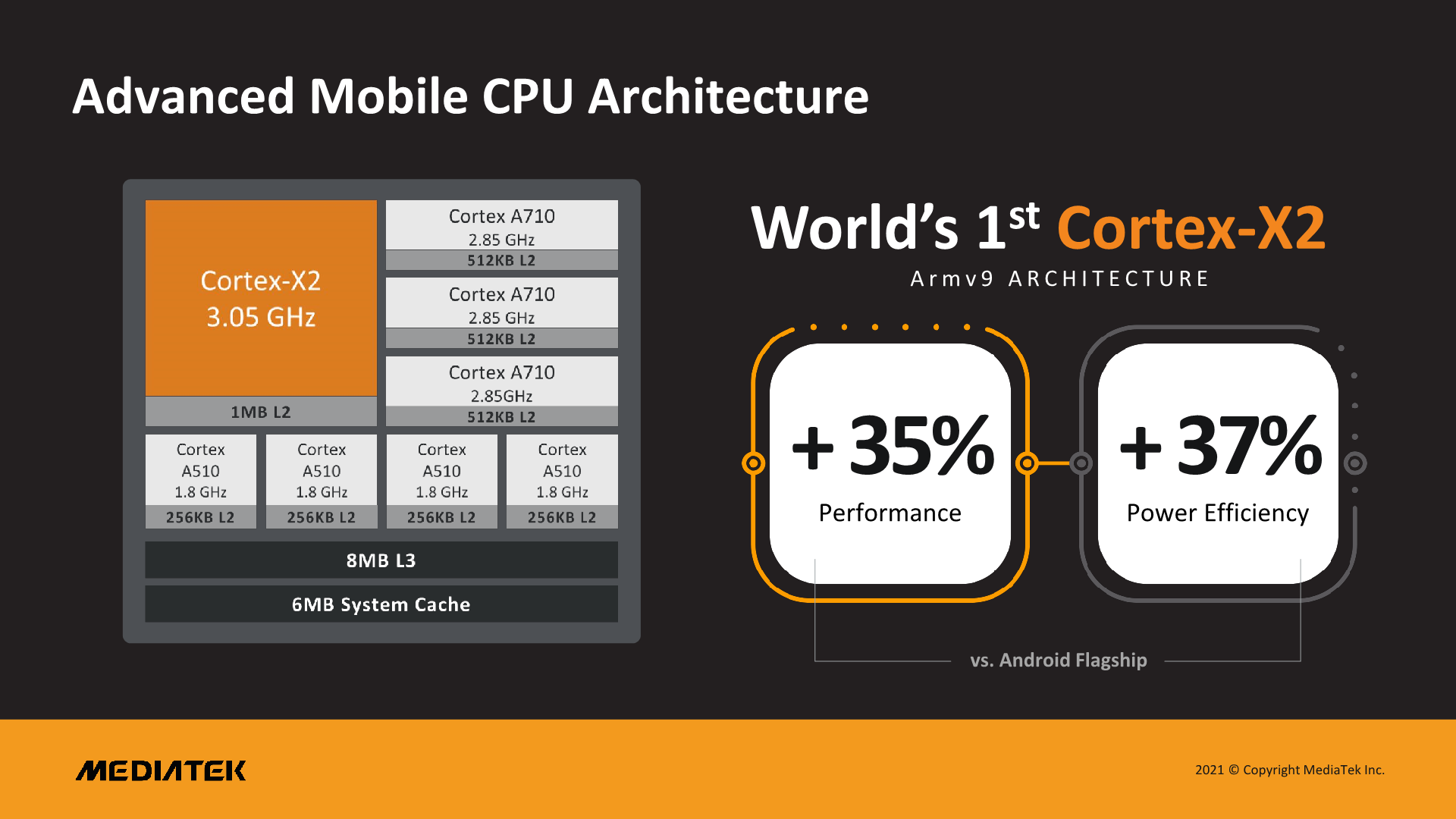
The Taiwanese company is now marching forward with the announcement of its Dimensity 9000 chipset that has the potential to be a strong competitor for the Qualcomm Snapdragon 898 and the Samsung Exynos 2200 chipsets that are expected to break cover next year.
MediaTek says the new SoC will be built on TSMC's 4 nm process node, and that alone should bring some much-needed performance and efficiency improvements over previous Dimensity chipsets. The company has also opted for a CPU configuration that is similar to what its competitors are using in their upcoming SoCs. That means the new Dimensity chip will integrate a tri-cluster with one Arm Cortex-X2 "super" core, three high-performance Cortex-A710 cores, and four power-efficient Cortex-A510 cores.
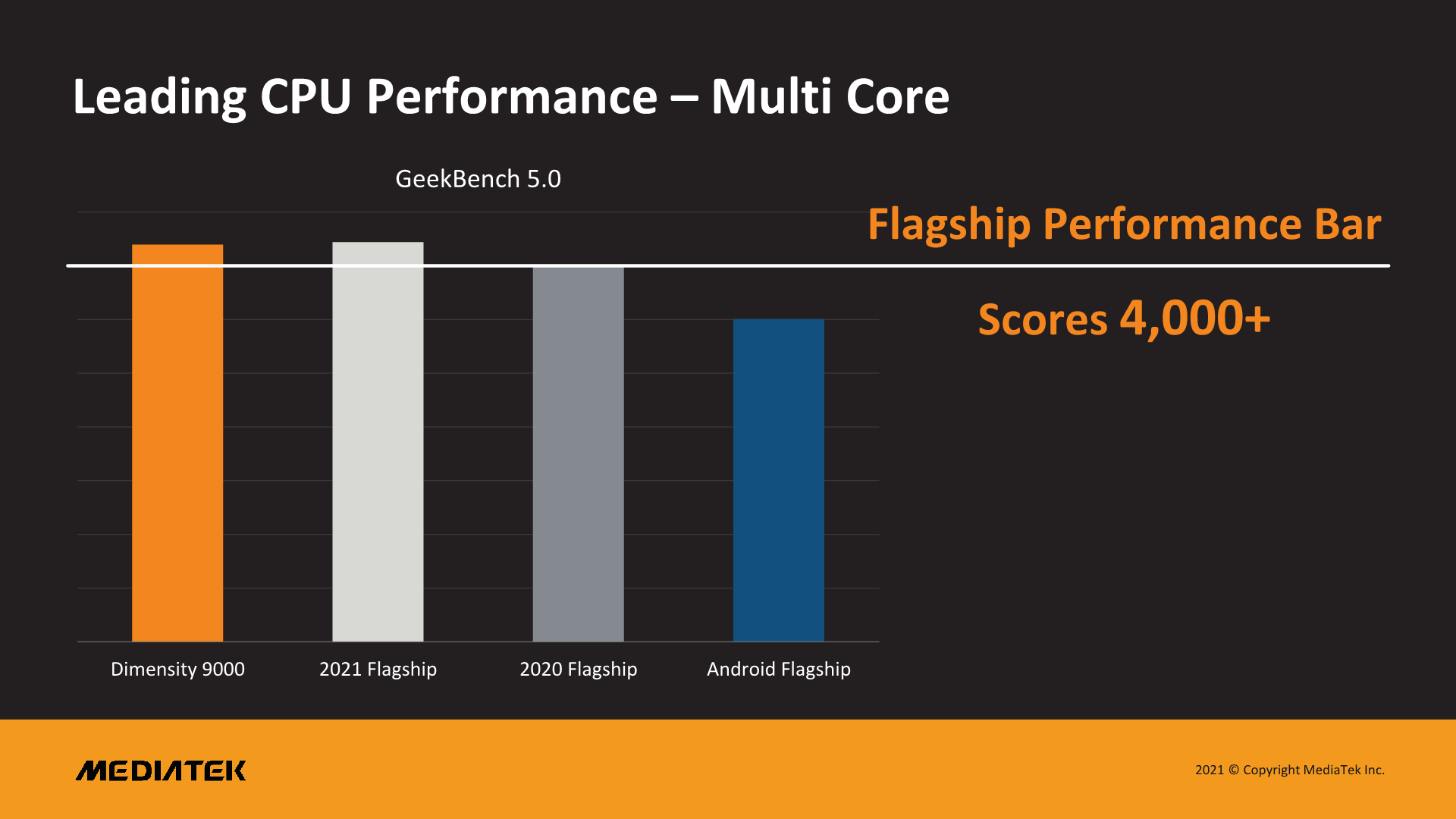
The Cortex-X2 CPU core is supposedly 35 percent faster and 37 percent more energy-efficient than a Cortex-X1 core, and MediaTek is also touting eight megabytes of L3 cache and six megabytes of system-level cache (SLC). For reference, Qualcomm's Snapdragon 888 SoC has four megabytes of L3 cache and three megabytes of SLC. Manufacturers will be able to pair the Dimensity 9000 with LPDDR5X memory working at up to 7,500 Mbps, which is also a pleasant surprise from MediaTek.
The Dimensity 9000 also integrates a 10-core Mali-G710 GPU, which is Arm's latest and greatest implementation with a 35 percent performance boost and 60 percent higher energy efficiency when compared to the Snapdragon 888. It's worth noting this is a comparison between a 4 nm part and a 5 nm one, so the real test will be against 4 nm chipsets from Samsung and Qualcomm that have yet to be announced.
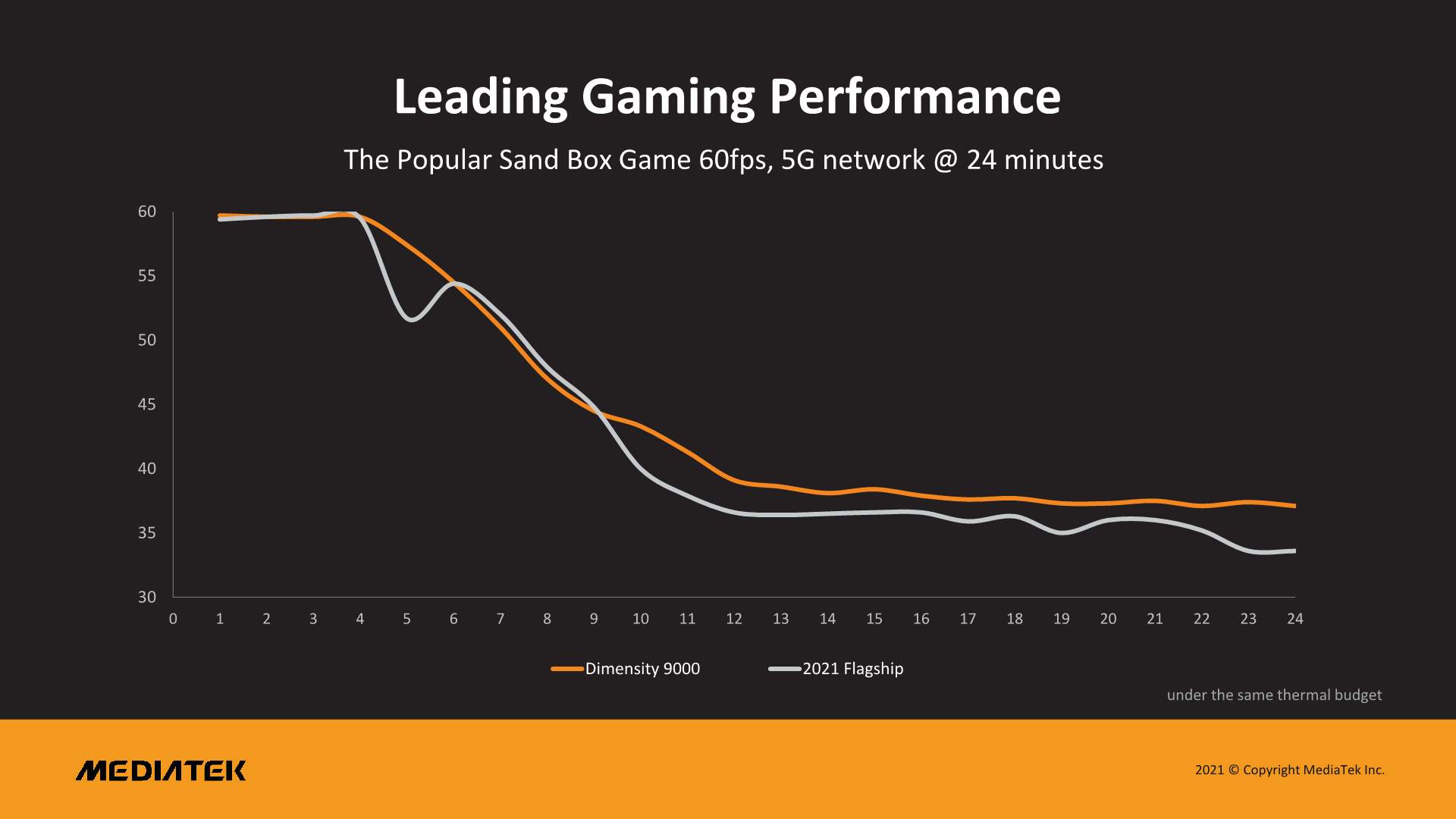
Finbarr Moynihan, MediaTek's vice-president and general management of marketing, explained the new GPU will also support software-based ray tracing, as well as ray tracing via Vulkan for Android. Machine learning tasks will also be much faster on the new chipset, with five times the performance of energy efficiency that are possible with the Dimensity 1200.
Another area that's been improved is multimedia support, with a new Imagiq 790 signal processor that has double the processing power of its predecessor. It supports up to a single 320-megapixel sensor, or up to a triple 32-megapixel camera setup. On top of the video recording capabilities afforded by the Dimensity 1200, the Dimensity 9000 supports recording 8K 24fps video, or up to three simultaneous 4K HDR streams.
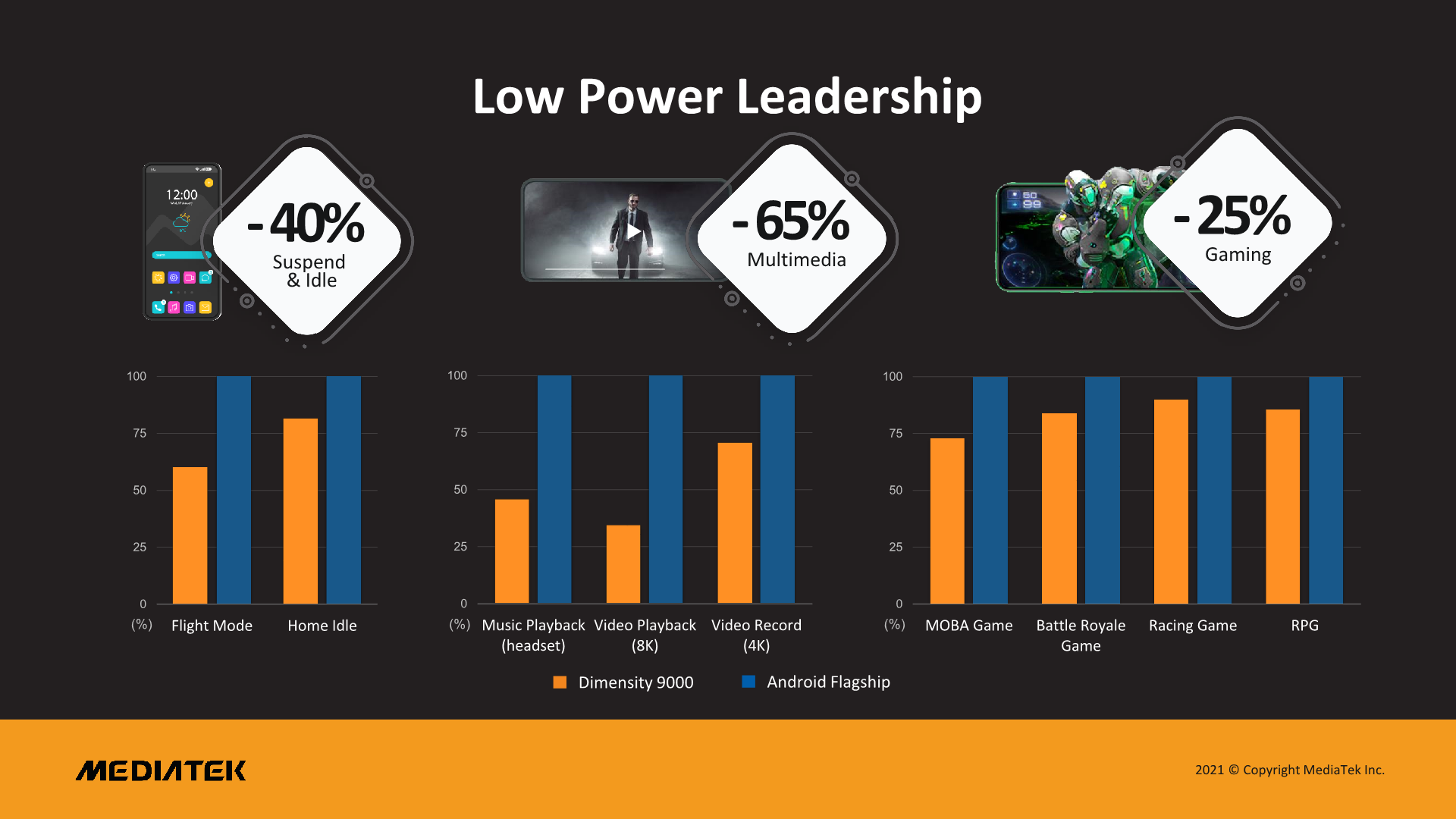
In terms of connectivity, the Dimensity 9000 only supports sub-6GHz 5G, but MediaTek says it's enough to reach download speeds of up to 7 Gbps using 3CC carrier aggregation. The new modem implementation should also offer improved battery life, which is currently more useful than mmWave support for everyone that doesn't live in the US. Other notable features are support for Bluetooth 5.3, Wi-Fi 6E, and complete GNSS navigation.
As for when we can expect to see the first devices featuring the new chip, MediaTek says some of its partners are aiming for a late Q1, early Q2 2022 launch window. The company has been slowly eating away Qualcomm's share of the mobile chipset market, and it will be interesting to see if it can continue to do so with higher-end offerings.
